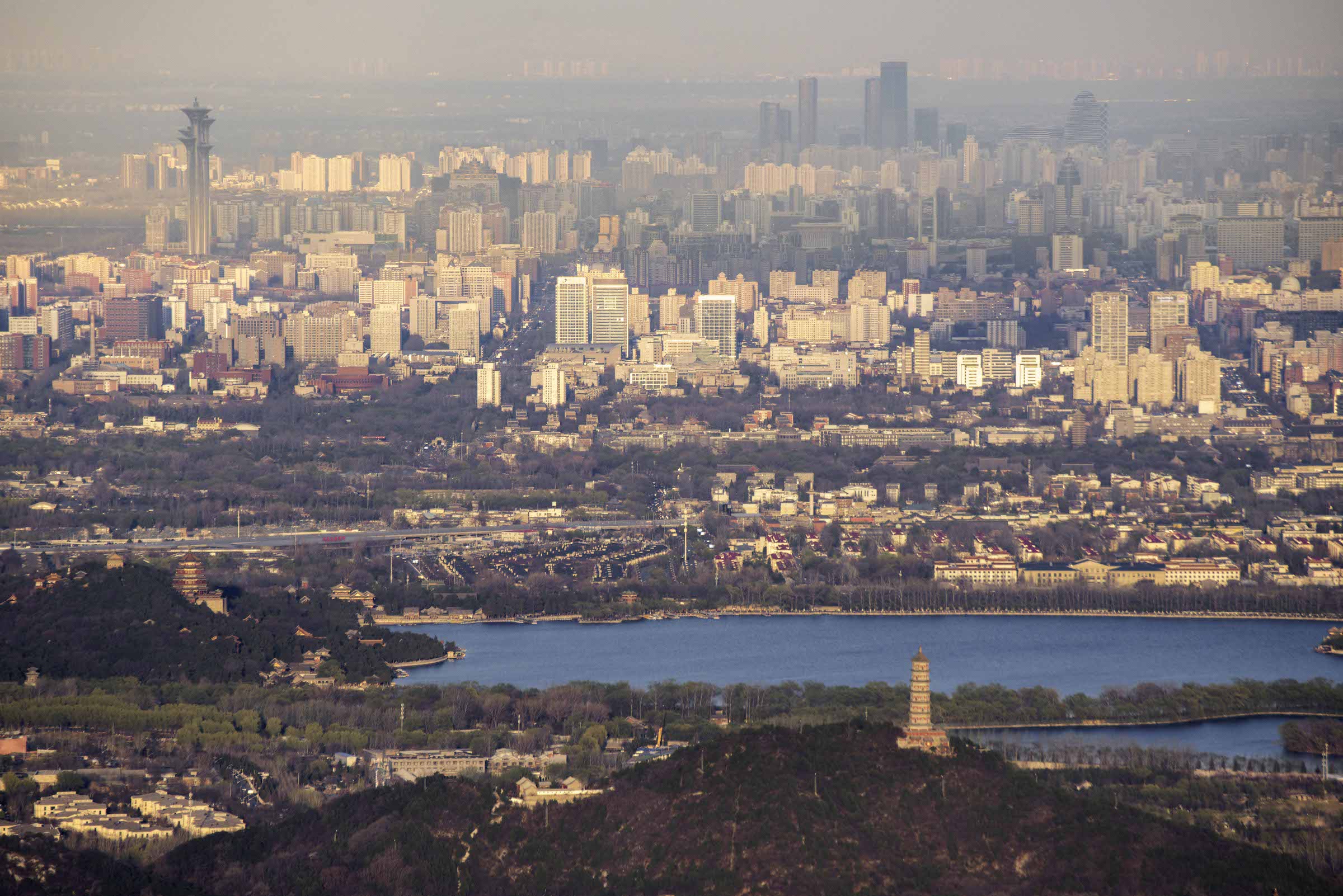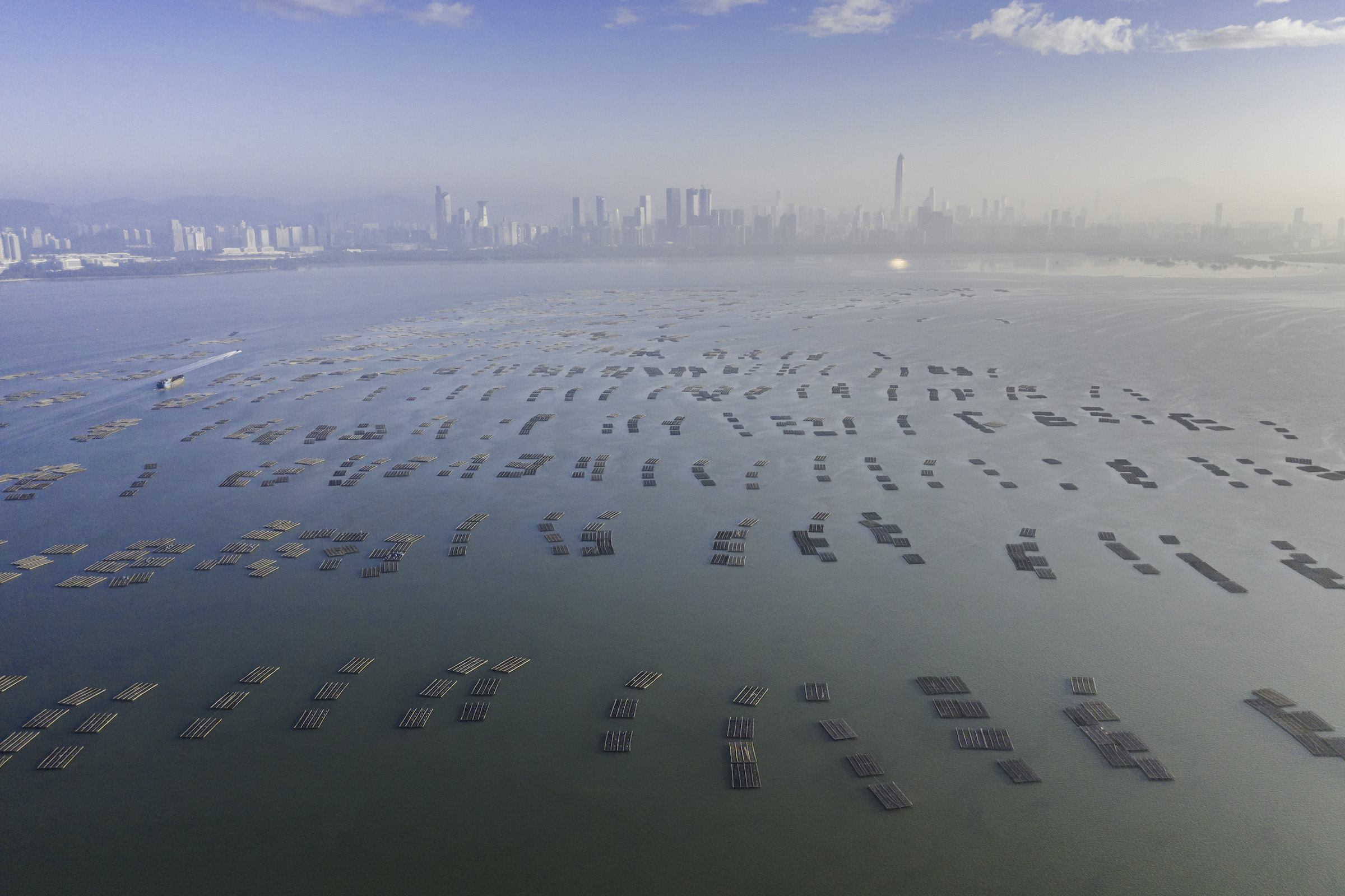How China is attempting to change nature conservation
China is undergoing a great experiment — tightly controlled and driven by big data — that it hopes will offer an alternative way of protecting the planet. For all our sakes, let’s hope it works.

I was surprised to encounter the White House amid Sichuan’s Qionglai Mountains, decrepit, looking like a scene out of a post-apocalyptic movie. Surprised, partly because I had not been in China long, and didn’t yet know about the replica White Houses, Eiffel Towers, and Jackson Holes in random valley towns. But mostly surprised because I was traveling through a nature reserve.
Of course, China’s first nature reserve is only as old as Tom Hanks. Vestiges of the recent past are overgrown across many of China’s protected areas: felled trees, empty mines, destroyed shrines, inspirations from U.S. government infrastructure. Proof that despite imperfections, China’s protected area system at least effectively rewilded and preserved some of the 18% of terrestrial land it covers on paper.
These days, in an effort that goes unnoticed by most of the world, China’s leadership is pushing further to build what Jessica Gordon of the University of California, Berkeley’s Center for Law, Energy, and the Environment once called the “world’s most comprehensive ecosystem-based land planning strategy” and raise the percentage of protected land area to 35% through Ecological Conservation Red Lines (ERLs). This innovation has the potential to make China a leader in global conservation, be exported elsewhere along the Belt and Road Initiative, and strengthen the state’s control over its land and people.
A different kind of red line
If China’s new national parks are the crown jewels of the state’s growing protected area system, ERLs are supposed to be the Tower of London’s bomb-proof glass that keeps them out of harm’s way. They are designed to include the preexisting 18% while looping in the pockets of China’s land and water that fall outside the officially protected area system but still have ecological utility and value to the state, its economy, and future. In short, they provide a bottom line for where development cannot go, and compose China’s most ambitious conservation goals yet. In theory, of course.
But history proves how essential these red lines, which mean “insurmountable boundary” in the traditional Chinese dictionary, are to state planners. In 1964, the Second National Population Census dismayed state planners: 723 million people, with every indication that the population would break the then Central Committee’s population red line of 800 million. That very year, the National Population and Family Planning Commission was established, but to little avail. The population continued to surge past the red line, and, in 1981, one year before the third census announced China passed 1 billion, the one-child policy was rolled out.
Today, the population red line is set at 1.5 billion. There are also red lines for arable land (120 million square kilometers) and water resources (less than 700 billion cubic meters of water used). These markers can be understood as a kind of absolute carrying capacity for both the environment and the state, a necessity for China’s ecological civilization and political model that must be achieved no matter the cost.
As Emily Yeh and Chris Coggins write in Mapping Shangrila:
The ecological state has requisite land classification systems that dictate, often with a high degree of specificity, which people have access to which resources in which times and places, and these regulations often have little to do with sociocultural patterns that have long-standing value for local and regional identities and livelihoods.
China’s red lines, when pushed to their limit, trump fertility rights, water access, and land tenure. The new ERLs are no different. As early as 2002, local planners were piloting the use of red line control areas to conserve land and water resources in Zhejiang Province, and at least one factory inside the established red line was paid to relocate.
This sounds ideal. But Yifei Li and Judith Shapiro argue in China Goes Green that even the best of China’s heavy-handed environmentalism is merely a means to prop up state power. The meticulous spatial land planning required to achieve the state’s so-called “national ecological security” is China’s modern “reincarnation” of Marxist development theory, revolutionizing the state from Máo Zédōng’s 毛泽东 industrial civilization to Xí Jìnpíng’s 习近平 ecological civilization.

Whether Marxist, authoritarian, or the late E.O. Wilson’s half-earth dream (almost) incarnate, ERLs are indeed hallmarked by an unprecedented and impressive amount of spatial planning. From the bottom up, the state relies on data from local researchers and input from China’s nationwide Ecological Function Zoning Map and National Ecological Quality Index to map out hot spots for ecosystem services, fragile ecosystems, and biodiversity. They then overlay existing protected areas, subtract key land tracts reserved for development space, and work to connect ERL boundaries.
From the top down, the red lines clarify China’s three-space land planning system, where the nation’s land is zoned into production space, urban space, and ecological space. Within ecological spaces, only protected areas originally assured conservation status and were often formed in mountainous regions or remote areas already relatively distant from development. ERLs push planners to think beyond convenience and even biodiversity, using big data to answer the persistent question “when and why to protect” in order to “ensure that there is no net change in land cover, and no net loss of biodiversity or degradation of ecosystem services within areas that are critical for maintaining ecological safety and functions, thereby improving environmental quality and promoting the efficient use of resources.”
The operative word there is net. Welcome to the loopholes.
The system’s limitations — and potential
The wording of the current ERL policy allows for national-level infrastructure and energy resource security projects to breach the lines when necessary. It also allows for limited human activities that do not “harm ecological function” within the lines. Although the ERLs are well backed by clear data, their management and interpretation are not backed by similarly clear legal standards or enforcement.
In 2020, Shenzhen and the Chinese Academy of Science’s South China Sea Institute of Oceanology made headlines for a plagiarized environmental impact assessment (EIA) falsely claiming that a dredging project through the ERL of Shenzhen Bay would cause no harm. Guangxi’s 2018 initial ERLs were never made public, enabling the destruction of 170 square kilometers of mangroves. Inside a Guizhou ERL area, 17 wind turbines were removed. In cities like Shenyang and Chongqing, ERLs conflicted and overlapped with urban and production spaces.
But in April this year, the Ministry of Natural Resources announced the ERL system complete, covering nearly 32% of China’s land and 150,000 square kilometers of ocean. The system is backed by the “sky-space-ground” monitoring network, mainly 30 satellites scanning the nation’s land at 2m resolution every quarter and <1m resolution every year, ensuring that any object equal to or greater than the resolution size is identifiable. This process generates enough annual remote sensing imagery of China to cover 19 times the country’s landmass. According to Chang Guang Satellite Technology Co., which claims to provide remote sensing data analysis service for at least some of the ERLs, they are able to detect human disturbance with 90% accuracy. When satellites are not enough, tower-based remote sensing facilities and vehicle patrols monitor key areas. The sky-space-ground monitoring network has already identified 30,000 traces of human activity and 2,000 clues to ecological damage.
As for the case in Shenzhen Bay, although the adjacent Futian National Nature Reserve had no jurisdiction to halt the proposed dredging next door, the project is now canceled thanks to pressure from local environmental groups that leaned on the ERL as legal basis for their complaints.

Where is this all heading? On one hand, the ERLs are one of the world’s most ambitious and well-monitored “other effective area-based conservation measures” (OECM) promoted by the Convention on Biological Diversity and International Union for Conservation of Nature. If counted toward China’s total protected land area, ERLs would move China from No. 107 in the global ranking for protected terrestrial area to No. 30, right behind New Zealand.
On the other hand, unclear standards and enforcement hold back the system’s potential. But this is recognized, expected even. While the ERL ink dries, the legal system enforcing China’s overarching National Territory Spatial Planning (NTSP), which includes ERLs, is not due to become “perfect” until 2025. Political scientists Elizabeth J. Perry and Sebastian Heilmann term this kind of experimental and adaptive, top-down and bottom-up policymaking China’s “guerilla policy style.” I rather like to think it more akin to a series of New Zealand road trips I did in college with classmates driving a station wagon with an odometer over 200,000. We knew it would break down, and when it inevitably did, we emptied our collective wallets to fix it and keep going. We got there. Gondor, The Shire, New Zealand — sorry — was fantastic in the end.
From here, China’s spatial planning prowess via ERLs will go in multiple directions. As it strengthens the system at home, it will likely begin exporting the system abroad, first with Belt and Road Initiative nations. Researchers from the Chinese Academy of Science have already mapped out potential ERL boundaries for Southeast Asia via the same remote sensing data methods used at home. This could be a massive boon to the nature of these nations, supposing their governments have the legal and monitoring infrastructure to support such intensive and restrictive zoning. But it is hard to imagine that they do, given China is still struggling with the same issues.
In the more Orwellian direction, ERLs and the NTSP may also begin using social sensing, where phone location data, social media tags, taxi data, and other information generated from individuals online are absorbed into the monitoring system, with or without consent. There’s evidence this has already begun, which harkens back to Yifei Li and Judith Shapiro’s gloomy pronouncement that China’s pursuit of ecological well-being is really the transformation of nature into political capital, harnessed for “authoritarian resilience and durability.”
The anthropocentric wording of the CPC Central Committee and State Council’s final goal for the NTSP by 2035 seems to back the idea of the state’s well-being coming before nature:
“By 2035, comprehensively modernize the country’s system and capacity for territorial space governance, and create a secure, harmonious, competitive, and sustainable territorial space with intensive and efficient production-space, livable and appropriate living-space, and ecological-space with beautiful mountains and clear water.”
Still, our planet is facing 30% to 50% of all its species going extinct by 2050. Homo sapiens, not asteroids or mega-volcanoes, are now the cause of the earth’s sixth mass extinction. The Global North’s development model did not work for nature. China’s great experiment, and the one it will now begin offering the rest of the world, is testing whether a highly controlled, big-data-driven spatial governance system like the ERLs that are overseen by technocratic and authoritarian leadership can overcome their current shortcomings and offer a direly needed alternative to protect more, much more, of the planet.
Mountain Water is a monthly column.






